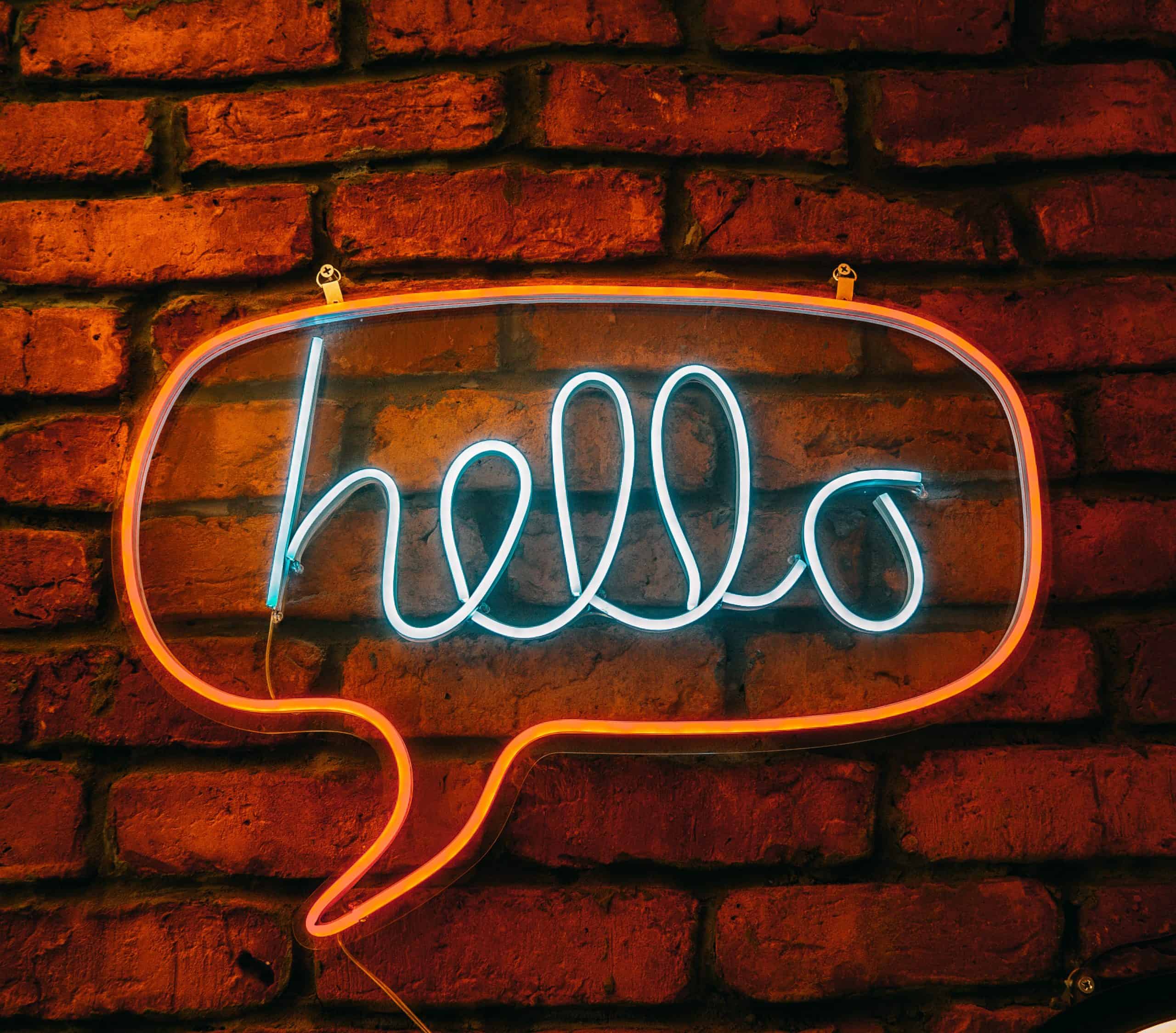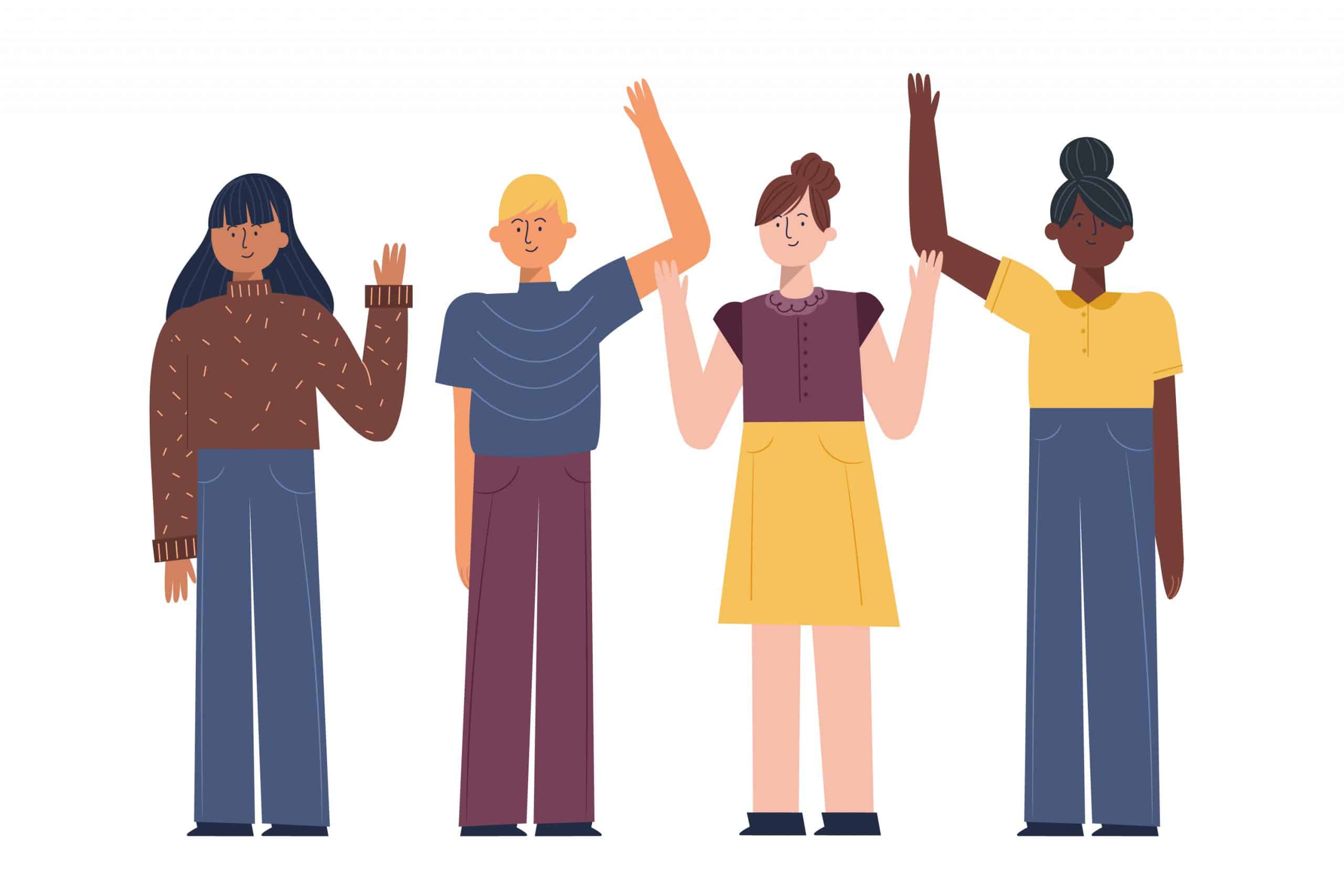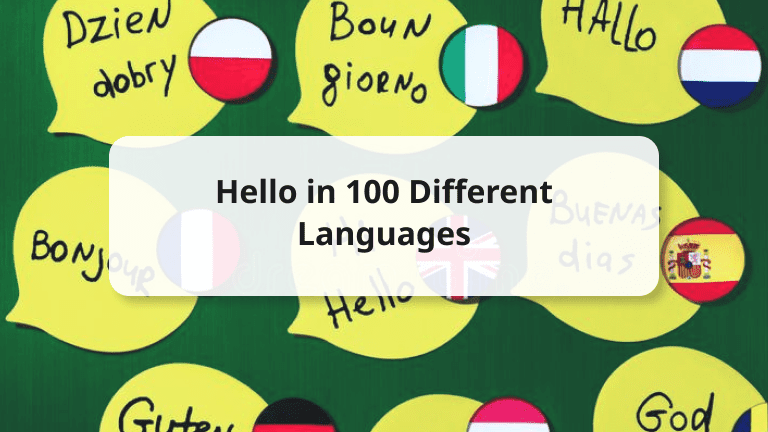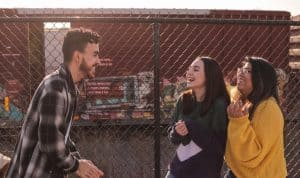So you want to learn how to say “hello” in different languages.
Why hello there!
Wouldn’t this opening paragraph feel a bit odd without a greeting? The same goes for when speaking to other people. Greeting people can start up a conversation on a personal note, and connect with others on a deeper level. You can even bring a smile to someone’s face!
Now, due to the existence of other languages (7100 of ‘em), there are many different ways to greet others other than the old-fashioned “Hello”. When traveling about on our little blue planet, you start to realize that knowing how to greet people in their language has a more positive impact than one originally might think, it just helps you seem more approachable and talkable, ya know? Natives will even be more willing to help you.
It is thus important that you learn how to greet people in the language of the country that you are visiting. It really doesn’t take a lot of time or energy to learn it. To make your little learning journey even faster, here’s a list of how to say hello in different languages in formal and informal ways (if applicable) in 100 different countries, with some interesting tidbits! All languages are linked to qualified tutors that can help you reach fluency in no time!
Hello in 10 Popular Languages
-
Spanish: Hola
-
French: Bonjour
-
German: Guten tag
-
Italian: Salve
-
Chinese: Nǐn hǎo
-
Portuguese: Olá
-
Arabic: Asalaam alaikum
-
Japanese: Konnichiwa
-
Korean: Anyoung haseyo
-
Russian: Zdravstvuyte
Hello in Different Languages

1. Chinese
Formal: Nin hao. This is used to show respect to elders and those of a higher class social status
Informal: Ni hao.
Where it’s spoken: China, Singapore, and Taiwan
The second most spoken language, with a population of about 1.1 billion.
2. English
A simple hello can be used in formal and informal situations.
Formal: Good morning/evening/afternoon
Informal: Hi, sup, hey and what’s up, and hey, are used.
Where it’s spoken: UK, Canada, South Africa, Singapore, Ireland, India, Australia, New Zealand, U.S.A, and the Philippines. Mostly everywhere in the world.
The most spoken/international language on this planet, with a population of 1.5 billion.
3. Hindi
Formal/Informal: Namaste This greeting is paired with a slight bow of the head and with your hands in a praying position.
Where it is spoken: Nepal, India, and Fiji.
The third most spoken language, with a population of about 602 million.
4. Arabic (Standard)
Formal: As-salām ‘alaykum
Informal: Márhaban or ahlan
Where it is spoken: East and North Africa, and in Western Asia.
The sixth most spoken language, with a population of about 274 million.
5. Portuguese
Formal: Olá
Informal: Oi and Bom dia (Good Day)
Where it is spoken: Brazil, Portugal, Timor-Leste, Cape-Verde, Sao-Tome, Mozambique, Principe, and Angola.
The ninth most spoken language, with a population of about 258 million
6. Bengali
Formal: Assalamu alaikum for Muslims and Nômôskar for Hindus.
Informal: Hyālō
Where it is spoken: India: Assum, Tripura and West Bengal, and Bangladesh.
The seventh most spoken language, with a population of about 273 million. The only official language in Bangladesh.
7. Russian
Formal: Zdravstvuyte, it is also the go-to Russian greeting that can be used in any situation.
Informal: Zdorovo, Privet, and Allo (when answering the phone).
Where it is spoken: Mongolia, Russia, and former Republics of the Soviet Union.
The eighth most spoken language, with a population of about 258 million.
8. Japanese
Formal, time-specific:
Ohayō gozaimasu (morning)
Konnichiwa (afternoon)
Konbanwa (evening)
Informal: Yā or Yō
Where it is spoken: Japan
The 13th most spoken language, with a population of about 125 million. Bowing while you greet is a sign of respect!
9. Punjabi
Formal:
Sata sri akaal, Sikh hello.
As-alam-walaykum, Muslim hello.
Informal: Hailō
Where it is spoken: In India and Pakistan Western Punjabi is the 30th most spoken language in the world with a population of 66 million, while Eastern Punjabi is 36th with 52 million.
10. German
Formal: Guten Tag (Good day)
Informal: Hallo or Tag
Where it is spoken: Germany, Switzerland, Italy’s South Tirol, Austria, Liechtenstein, Luxembourg, and Belgium.
The twelfth most spoken language in the world with a population of 135 million speakers.
11. Javanese
Formal: Nggoleki
Informal: Halo
Where it is spoken: Island of Java in Indonesia.
28th most spoken language in the world with a population of around 68 million.
12. Spanish
¡hola! can be used in formal and informal situations.
Informal: Que tál?
Time-specific greetings:
Buenos dias (good morning)
Buenas tardes (good afternoon)
Buenas noches (good night)
Where it is spoken: Spain, Equatorial Guinea, Pacific Islands, Western Sahara, U.S.A, and Hispanic America.
4th most spoken language in the world with a population of 548 million.
13. Telugu
Formal: Namaskārām
Informal: Halō
Where it is spoken: India’s Puducherry, Andhra Pradesh, Karnataka, and Tamil Nadu.
16th most spoken language with a speaker population of 96 million.
14. Korean
Formal: Anyeong haseyo, can be used for any situation and for anyone. It roughly means “Please be well.”
Informal: Anyoung
Where it is spoken: North and South Korean
23rd most spoken language with a population of 82 million.
15. Malay/Indonesian
Formal: Hello
Informal: Hai
Time-specific greeting:
Selamat pagi (morning)
Selamat tengahari (afternoon)
Where it is spoken: Brunei, Singapore, Indonesia, and Malaysia.
11th most spoken language, with a population of 199 million.
16. Vietnamese
Formal: Xin chào
Informal: Chào bạn
Where it is spoken: Mainly in Vietnam.
20th most spoken language with a population of 85 million.
17. French
Formal/Time-specific: Bonjour (good day) and Bonsoi (good evening)
Informal: Salut (close family and friends), Coucou (fun greeting, only for children, family, and friends.), and Allô (when answering the phone).
Where it is spoken: Francophone Africa, Belgium, France, French Caribbean, Canada, French Polynesia, Pacific, and Indian islands.
5th most spoken language, the approximate population is 274 million.
18. Marathi
Formal: Namaskār
Informal: Hĕlō
Where it is spoken: Madhya Pradesh, Gujarat, Goa, Maharashtra, Andhra Pradesh, and Karnataka.
15th most spoken language with a population of 99 million.
19. Tamil
Formal: Vaṇakkam
Informal: Alo
Where it is spoken: India’s Puducherry and Karnataka Singapore, Malaysia, Mauritius, Sri Lanka, and Tamil Nadu.
18th most spoken language with a population of 86 million speakers.
20. Urdu
Formal: ‘assalam-o-alaikum
Informal: Hello
Where it is spoken: Pakistan and India.
10th most spoken language with approximately 231 million speakers.
21. Persian
Salām is the most commonly used greeting for almost every situation.
Where it is spoken: Tajikistan, Iran, and Afghanistan
24th most spoken language with a population of 77 million.
22. Turkish
Formal: Merhaba
Informal: Selam
Where it is spoken: Cyprus, Bulgaria, and Turkey.
17th most spoken language with a population of 88 million.
23. Cantonese
Néih hóu
Where it is spoken: Macau, Hong Kong, Guangdong, and Guangxi.
A variety of Japanese. The 19th most spoken language with a population of 86 million.
24. Italian
Formal: Salve
Informal: Ciao (Only for close friends and people you know) and Pronto (When answering the phone).
Time-specific greetings:
Buongiorno (morning)
Buon pomeriggio (afternoon)
Buonasera (evening)
Where it is spoken: San Marino, Italy, and Switzerland.
29th most spoken language with a population of 68 million. Considered to be one of the most beautiful languages.
25. Thai
Formal: Sà-wàt-dii
Informal: Wàt-dii, dii, Sawasdee krap (Greeting as a male) and Sawasdee ka (greeting as a female)
Where it is spoken: Thailand
32nd most spoken language with a population of 61 million.
26. Gujarati
Formal: Namaste
Informal: Kem cho
Where it is spoken: Gujarat in India.
31st most spoken language with a population of 62 million.
27. Min Nan
Lí-hó or Lí hó bó
Where it is spoken: Guangdong, Hainan, Zhejiang, North-Eastern and South-Eastern US, Chinese communities in Japan and Southeast Asia.
37th most spoken language with a population of 50 million.
28. Polish
Formal: Dzień dobry (good morning)
Informal: Cześ, Siema (Used by young people), and Hej.
Where it is spoken: Western Ukraine, Lithuania, Poland, United Kingdom, Belarus, USA, and Germany.
43rd most spoken language with a population of 41 million.
29. Greek
Formal: Yassas
Informal: Yassou
Time-Specific greetings:
Kalimera (morning)
Kalispera (afternoon)
Kalinita (good evening)
Where it is spoken: Cyprus and Greece.
30. Czech
Formal: Dobrý den (Good day).
Informal: Ahoj
Where it is spoken: Czech Republic.
The language has about 11 million speakers.
31. Zulu
Formal: Sawubona (to one person) and Sanibonani (group of people).
Informal: Ninjani
Where it is spoken: South Africa
One of many official languages in South Africa with about 10 million speakers.
32. Kurdish
Silav and As-salaamu’ alaykum is used as well.
Where it is spoken: Syria, Northern Iraq, Kurdistan, and Turkey.
With about 30 million speakers, this language is rated as the third-largest Iranian language.
33. Malayalam
Formal: Namaskkaram
Informal: Hei
Where it is spoken: Kerala, Lakshadweep, and Mahé in India.
There are around 36 million people that speak this language.
34. Chinese, Hakka
Nǐ hǎo
Where it is spoken: Taiwan, Southern China, Southeast, and East Asia.
Hakka Chinese is spoken by the Hakka people.
35. Kannada
Namaskār
Where it’s spoken: Tamil Nadu, Maharashtra in India, Andhra Pradesh, and Karnataka
33th most spoken, the language has about 57 million speakers
36. Oriya/Odia
Namaskār
The official language of Odisha in India.
37. Punjabi, Western/Lahnda
Formal: Sata sri akaal (Sikh) and As-alam-walaykum (Muslim)
Informal: Hailō
Where it is spoken: Punjab region of Pakistan, Afghanistan, Bangladesh, Kenya, United Kingdom, U.S., and Canada.
30th most spoken language in the world with an approximate population of 52 million speakers.
38. Sunda/Sundanese
Formal: Sampurasun
Informal: Halo
Where it is spoken: Indonesia (Western Java), Banten, Jakarta, and Southern Lampung.
42nd most spoken language with a population of 42 million.
39. Punjabi, Eastern
Formal: Sata sri akaal (Sikh) and As-alam-walaykum (Muslim)
Informal: Hailō
Where it is spoken: State of Punjab of India
36th most spoken language in the world with an approximate population of 66 million speakers.
40. Romanian
Formal: Salut
Informal: Bună
Where it is spoken: Moldova and Romania.
Spoken by approximately 24 to 26 million speakers.
41. Bhojpuri
Prannam
Where it is spoken: Bihar in India.
35th most spoken language with a population of 53 million. One of the most rapidly growing languages!
42. Azerbaijani, South
Salam or Salam aleykum
Where it is spoken: Northern Iran and Azerbaijani
43. Hausa
Sannu
Where it is spoken: Nigeria.
25th most spoken language, with a population of 77 million speakers. An important indigenous bridge language for Central and West Africa.
44. Burmese
Mingalarba
Where it is spoken: Myanmar
41st most spoken language with a population of 43 million.
45. Awadhi
Vanakkam
Where it is spoken: In the Awadh region of Uttar Pradesh in India. The language has about 38 million speakers.
46. Yoruba
Bawo ni
Where it is spoken: Nigeria, Benin, and Togo
39th most spoken language with a population of around 46 million.
47. Sindhi
Assalamu alaikum
Where it is spoken: Sindh
The language has about 25 million speakers.
48. Samoan
Talofa
Where it is spoken: Samoan Islands
It has about 500,000 speakers and is considered one of the most spoken Polynesian languages.
49. Tongan
Formal: Mālō ‘etau lava
Informal: Mālō e lelei
Where it is spoken: Tonga
The language has about 187,000 speakers.
50. Yiddish
Formal: A gutn tog
Informal: Sholem-aleykhem, you then respond with “Aleykhem-sholem.”
Where it is spoken: Regions with Jewish populations: Europe, North and South America, and Israel.
Historically spoken by the Ashkenazi Jews. It now has a population of about 1.5 million speakers.
51. Welsh
Helo is used in most situations where Shwmae and Sut mae are casual greetings.
Where it is spoken: Wales and by some in England.
Also known as Cambric, Cymric, British and Cambrian.
52. Lithuanian
Formal: Laba diena (Good day)
Informal: Sveika (When speaking to a female) and Sveiki (when speaking to a male.)
Where it is spoken: Lithuania
One of the official languages of the European Union and one of the oldest languages in the world.
53. Latvian
Sveiki
Where it is spoken: Latvia
One of the official languages of the European Union and with about 1.8 million speakers.
54. Icelandic
Halló and Gothan dag can be used in every situation whereas Hæ, Sæll (when speaking to a male), and Sæl (when speaking to a woman) are more casual ways of greeting.
Where it is spoken: Iceland.
It has about 314,000 speakers.
55. Estonian
Tere
Where it is spoken: Estonia.
Has about 1.1 million speakers and is closely related to Finnish.
56. Bosnian
Dobar dan can be used in every situation whereas Zdravo and Merhaba are more informal.
Where it is spoken: Bosnia and Herzegovina.
The same as Croatian and Serbian with over 2.8 million speakers.
57. Tibetan
Cho demo (Amdo dialect) and Tashi delek (Lhasa dialect)
Where it is spoken: Tibet Autonomous Region (Lhasa) and U-Tsang
58. Quechua
Allianchu or Allianmi Where it is spoken: Chile, Colombia, Peru, Bolivia, Andes Mountains + Argentina, and Ecuador.
59. Taiwanese Hokkien
Lí-hó
Where it is spoken: Taiwan
The language has about 13.5 million speakers. Mostly spoken by descendants of the immigrants from southern Fujian during the Qing dynasty.
60. Sinhalese/Sinhala
Formal: āyubōvan
Informal: halō
Where it is spoken: Sri Lanka (Mostly), the UK, India, New Zealand Canada, and Australia.
About 18 million speakers.
61. Malagasy
Salama or Manao ahoana (how is it).
Where it is spoken: Madagascar.
Spoken by about 25 million people.
62. Manipuri/Meitei
Khurumjari and hello (on the phone)
Where it is spoken: North East India (Manipur), Bangladesh, and Burm
Also known as Meetei, Meitheilon, Meeteilon, Kathe, and Meeʁteilon, the language has about 1025 million speakers.
63. Oromo
Formal: Akkam
Informal: Naqaa
Where it is spoken: Ethiopia and Kenya
It has a population of about 30 million people.
64. Breton
Demat
Where it is spoken: Brittany in France.
It has a population of about 226 000 speakers and is the only Celtic language still being spoken on the European mainland.
65. Amharic
Formal: Teanastëllën
Informal: Tadiyas and Sälam, Salamno (when speaking to a male), and Salamnish (when speaking to a female).
Where it is spoken: Ethiopia.
66. Burmese
Formal: Min-ga-la-ba shin (if you are female) and Min-ga-la-ba khin-bah (if you are male).
Informal: Ming-gah-lah-bahr
Where it is spoken: Myanmar
41st most spoken language with about 43 million speakers.
67. Assamese
Formal: Nomoskar
Informal: Oi
Where it is spoken: Assam (India)
It has a population of about 23 million people.
68. Chewa/Chichewa
Moni moni onse, a general greeting for everyone. Moni bambo (when speaking to a male) and Moni mayi (when speaking to a female).
Where it is spoken: Mozambique, Zambia, Zimbabwe, and Malawi.
It is also known as Nyanja with about 12 million speakers.
69. Hungarian
Formal: Szervusz/ Szevasz and Jó napot
Informal: Szia
Where it is spoken: Hungary and neighboring countries ( east Austria, Romania, Slovakia, Slovenia, northern Serbia, and western Ukraine).
70. Dogri
Ke aal aee
Where it is spoken: Jammu and Kashmir (India).
The language is spoken by about 5 million people.
71. Akan/Twi
Agoo
Where it is spoken: Southern and Central Ghana.
Spoken by the Akan people with about 20 million speakers.
72. Khasi
A simple hello can be used for any occasion but conversations usually start with Kumno.
Where it is spoken: Meghalaya (India) and Bangladesh.
The language has about 1.6 million speakers.
73. Hebrew
Formal: Shalom
Informal: Hey or Ma kore (What’s up)
Where it is spoken: Isreal.
A language that is written from right to left and is the historical language of the Israelites and their ancestors. It has about 9 million speakers.
74. Kinyarwanda
Formal: Uraho
Informal: Muraho bite
Where it is spoken: Rwanda, DR Congo, and Uganda.
Also known as Rwandan, Rwanda, or Ikinyarwanda, it has about 1.8 million speakers.
75. Haitian Creole
Formal: Bonjou (Before noon) and Bonswa (Afternoon)
Informal: Sak pase or Alo (for any occasion)
Where it is spoken: Haiti
It is spoken by about 15 million people.
76. Ilokano
Kablaaw
Time-specific greetings: Naimbag nga bigat (morning) Naimbag nga malem (afternoon) Naimbag nga rabi-i (evening)
Where it is spoken: La Union.
It has about 8.2 million speakers.
77. Hmong
Formal: Nyob zoo
Informal: Halo
Where it is spoken: China, Vietnam, Laos, Thailand, USA, and French Guiana.
It has about 3.7 million speakers.
78. Uyghur
Yahshimusiz
Where it is spoken: Xinjiang Also known as Uighurs, Uygurs, or Uigurs, has about 52,000 speakers.
79. Balochi
Salaam alekum
Where it is spoken: Turkmenistan, Pakistan, Iran, Afghanistan, and the Persian Gulf.
Spoken by about 3-5 million people
80. Serbo-Croatian
Zdravo
Where it is spoken: Serbia, Croatia, Bosnia and Herzegovina, and Montenegro
Also known as Serbo-Croat, Serbo-Croat-Bosnian, Bosnian-Croatian-Serbian, and Bosnian-Croatian-Montenegrin-Serbian. It has about 21 million speakers.
81. Santali/Santal
Henda ho
Where it is spoken: India, Bangladesh, Nepal, and Bhutan.
It has about 6.3 million speakers.
82. Khmer
Formal: Chum reap suor
Informal: Sous-dey
Where it is spoken: Cambodia.
Known as the language of the Khmer people, spoken by about 16 million speakers.
83. Bambara
I ni ce (one person) and Aw ni ce (group of people)
Where it is spoken: Ghana, Burkina Faso, and Côte d’Ivoire, Senegal, Gambia, Guinea, Sierra Leone, and Mali.
Also known as Bamana or Bamanankan, it is spoken by about 15 million people.
84. Assamese/Asamiya
Formal: Nomoskar
Informal: Oi
Where it is spoken: Assam in India.
Spoken by 23 million speakers.
85. Marwari
Rajasthani
Where it is spoken: India, Pakistan, and Nepal
Also known as Marwadi and Marvadi, it has about 22 million speakers.
86. Fula
Formal: A jaaraama
Informal: Sannu
Where it is spoken: West and Central Africa
Also known as Fulani or Fulah, it is spoken by 40 million people.
87. Igbo
Formal: Ndeewo
Informal: Kedụ
Where it is spoken: Nigeria
It has about 45 million speakers.
88. Tagalog
Formal: Mabuhay
Informal: Kamusta
Where it is spoken: Manila and Northern Philippines
Named Filipino in its standardized form.
89. Lao/Laotian
Formal: Saibaidee ton sao
Informal: Sabaidee
Where it is spoken: Laos.
The modern way of speaking Lao is heavily influenced by Tai. It has about 30 million speakers.
90. Kyrgyz
Formal: Salamatsyzby
Informal: Salam
Where it is spoken: Kyrgyzstan, Afghanistan, Tajikistan, Pakistan, and Xinjiang
A Turkic language, and is spoken by about 4.5 million people.
91. Pashto
Formal: Salaam alaikum
Informal: Salam
Where it is spoken: Afghanistan and Pakistan.
Also known as Afghani in historical Persian literature and is spoken by about 55 million speakers.
92. Wolof
Salaam aleekum, you respond with Malekum salaam
Where it is spoken: Senegal, Mauritania, and the Gambia
Spoken by approximately 5.4 million.
93. Tsonga/Xitsonga
Minjhani (When speaking to adults) and Kunjhani (when speaking to friends or children).
Where it is spoken: South Africa, Mozambique, and Eswatini.
Spoken by about 12 million people. It is mutually intelligible with Tswa and Ronga.
94. Ndebele/isiNdebele
Salibonani
Where it is spoken: South Africa.
It has about 2 million speakers.
95. Tswana/Setswana
Formal: Dumela (when speaking to one person) and Dumelang (when speaking to a group of people)
Informal: Hallo
Where it is spoken: South Africa.
Spoken by about 8.2 million.
96. Tigrinya
Kemeyi wī‘ilikumi, Chawi or Selam halewi.
Where it is spoken: Ethiopia
It has a population of about 10 million speakers.
97. Serbian
Formal: Dobar dan or Zdravo
Informal: Ćao
Where it is spoken: Serbia
It has a population of about 12 million speakers.
98. Finnish
Formal: Hyvää päivää
Informal: Haloo or Hei
Where it is spoken: Finland, Norway, Sweden, Karalia and U.S.A.
It has a population of about 6 million speakers.
99. Fijian
Formal: Ni sa bula or Ni sa bula vinaka
Informal: Bula
Where it is spoken: Fiji
It has about 340,000 speakers.
100. Marshallese/Ebon
Yokwe
Where it is spoken: Marshall Islands.
It has a small population of about 50,000 speakers.
Greet your way into someone’s good graces!

Remember, greeting someone in general or in their language is crucial to forming a better bond with them and starting up the conversation on a good note!
With this list, you will find the greeting that will suit the country that you will be flying off to, or maybe you just wanted to ease your curiosity.
Learning to say hello in Chinese or hello in Japanese is pretty cool, but what if you are interested in actually learning a language? As in, learn to become fluent in it? It takes a lot of work to do so, and getting a tutor to help you in your learning process is almost guaranteed to speed up the process, and even improve your quality of fluency. At AmazingTalker, we have a smart, dedicated group of tutors that cater to any of your language learning needs. You can even request tutoring sessions that fit your schedule! All are available on AmazingTalker.
















